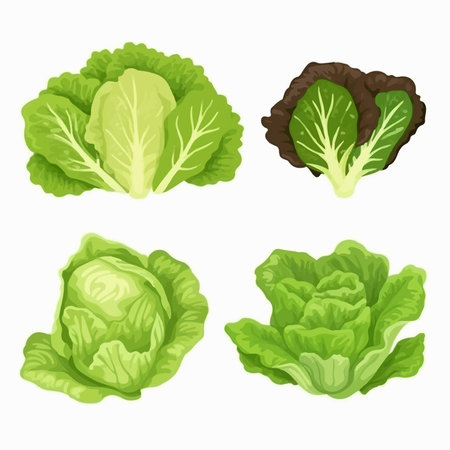Introduction: The Challenge of Cabbage White Butterflies in the UK
Among the many pests that British gardeners contend with, the cabbage white butterfly (Pieris rapae and Pieris brassicae) stands out as a particularly persistent adversary. These butterflies are a familiar sight across the UK, especially during late spring and summer, when their delicate white wings can be seen fluttering around allotments and vegetable patches. While aesthetically pleasing at first glance, their presence signals potential trouble for anyone cultivating brassicas—such as cabbages, broccoli, Brussels sprouts, and kale. The female butterflies lay clusters of yellow eggs on the undersides of leaves, which soon hatch into voracious green caterpillars. These larvae can rapidly decimate crops by chewing through leaves and damaging developing heads, often leaving plants ragged and unproductive. For British gardeners striving to grow healthy, chemical-free vegetables, managing cabbage white butterflies presents a recurring challenge that demands careful attention and effective organic solutions.
Identifying Cabbage White Butterfly Damage
Accurate identification of cabbage white butterfly (Pieris rapae and Pieris brassicae) damage is crucial for effective organic management in British gardens. Early detection allows for timely intervention, minimising crop losses and supporting healthy brassicas throughout the growing season.
Recognising Signs of Infestation
The most apparent sign of cabbage white butterfly activity is the presence of small to large holes in the leaves of brassicas such as cabbages, broccoli, Brussels sprouts, and kale. The edges of these holes are often ragged, and you may notice green or brownish droppings (frass) on the leaves and around plant bases. Additionally, look for clusters of yellow eggs on the undersides of leaves—these are typically laid by the Large White butterfly, while Small Whites lay single or smaller clusters of pale yellow eggs.
| Symptom | Likely Culprit | Description |
|---|---|---|
| Holes in leaves | Caterpillars (larvae) | Irregularly shaped, varying in size; usually found on younger foliage first. |
| Yellow egg clusters | Large White butterfly | Found on leaf undersides; clusters contain up to 100 eggs. |
| Pale yellow single eggs | Small White butterfly | Scattered singly or in very small groups on leaf undersides. |
| Green or brown droppings (frass) | Caterpillars | Easily spotted on leaves and soil beneath affected plants. |
| Caterpillar presence | Pieris species larvae | Green (Small White) or green with yellow stripes (Large White); usually found feeding on the underside of leaves. |
Understanding the Life Cycle in UK Conditions
The life cycle of cabbage white butterflies is closely tied to the British climate. Adults begin to emerge from late spring (April–May), with two to three generations possible each year depending on local weather conditions. Eggs are laid from spring through summer, and caterpillars can be found from May until September. Pupation occurs either in sheltered garden locations or among debris, enabling overwintering where winters are mild.
Life Cycle Overview for UK Gardeners
| Stage | Timeframe (UK) | Key Details |
|---|---|---|
| Adult Emergence | April–May, July–August (multiple waves) | Butterflies seen fluttering around brassicas, seeking sites for egg-laying. |
| Egg Laying | Late spring through summer | Eggs deposited mainly on leaf undersides; frequent inspections recommended during this period. |
| Caterpillar Development | May–September | Main period for larval feeding and visible damage; hand-picking can be effective if detected early. |
| Pupation/Overwintering | Autumn–early spring | Pupae found attached to walls, fences, or hidden among debris; some may survive winter if temperatures are mild. |
Proactive Monitoring Tips for UK Gardens
– Inspect brassica crops at least twice a week from April onwards.
– Focus checks on both upper and lower leaf surfaces.
– Remove any eggs or caterpillars by hand to prevent population build-up.
– Keep records of sightings and damage to track trends over seasons and inform future prevention strategies.

3. Physical Barriers: Netting and Cloches
One of the most effective organic methods for safeguarding brassicas from cabbage white butterflies in British gardens is the use of physical barriers, particularly fine mesh netting and cloches. These solutions are widely adopted across the UK due to their reliability and minimal impact on the environment. By creating a physical separation between the vulnerable crops and the butterflies, gardeners can prevent egg-laying and subsequent caterpillar damage without resorting to chemical interventions.
Fine Mesh Netting
Fine mesh netting is especially popular among British allotment holders and home gardeners alike. The mesh should be fine enough (typically less than 5mm) to exclude adult butterflies while still allowing light, air, and rain to reach the plants. It is important to ensure that the netting is securely anchored around the crop, with no gaps at ground level where butterflies might slip through. Many experienced gardeners recommend raising the netting above the plants using hoops or frames to prevent leaves from touching the mesh, which could allow butterflies to lay eggs through the fabric.
Choosing and Installing Netting
Selecting UV-stabilised netting will provide durability throughout the growing season. When installing, make sure to check regularly for any tears or loose edges, as even a small breach can compromise protection. Remove the netting only when weeding or harvesting, and replace it immediately afterwards.
Cloches as Protective Structures
Cloches—either rigid plastic tunnels or traditional glass bell jars—offer another layer of defence, particularly for young seedlings or smaller plots. In British gardens, cloches are often used early in the season to give crops a head start while providing robust protection from pests. Like netting, they must fit securely over the plants to be effective against cabbage white butterflies.
Integrated Barrier Approaches
Combining netting with cloches can offer comprehensive protection throughout different growth stages of brassicas. For instance, cloches can be used for initial establishment, followed by larger netted structures as plants mature. This integrated approach aligns well with sustainable gardening practices prevalent in Britain, enabling growers to reduce pest pressure organically while maintaining healthy, productive crops.
4. Companion Planting Solutions
Companion planting is a cornerstone of traditional British gardening, and it offers an effective organic approach to protecting brassicas from cabbage white butterflies. By interplanting specific herbs and flowers among your cabbages, broccoli, and kale, you can naturally deter pests while fostering vigorous plant growth. The principle behind companion planting is that certain plants emit scents or compounds which confuse or repel the adult butterflies, reducing their likelihood of laying eggs on your crops.
Using Traditional British Companion Plants
The following table highlights some classic British companion plants known to benefit brassicas by deterring cabbage whites:
| Companion Plant | Benefits for Brassicas |
|---|---|
| Nasturtiums | Act as a sacrificial crop, attracting cabbage white butterflies away from brassicas. |
| Marigolds (Calendula) | Emit strong scents that mask brassica odours, making them less attractive to butterflies. |
| Mint | The aromatic foliage helps deter egg-laying insects including cabbage whites. |
| Dill | Attracts beneficial predatory insects that feed on caterpillars. |
| Thyme | The pungent aroma confuses pests searching for host plants. |
Strategic Planting Tips
- Plant nasturtiums at the borders of your brassica beds to lure butterflies away from key crops.
- Intermingle marigolds and mint throughout the vegetable patch for broad-spectrum pest deterrence.
- Add dill and thyme between rows to attract natural predators and further disrupt butterfly behaviour.
Cultural Considerations for UK Gardens
Many of these companion plants are not only practical but also contribute to the quintessential cottage garden aesthetic beloved across Britain. Integrating them supports pollinators and enhances biodiversity—principles central to organic gardening traditions in the UK. Consistent rotation and thoughtful positioning maximise both protective effects and visual appeal, ensuring your brassica patch remains healthy and productive throughout the growing season.
5. Encouraging Natural Predators
One of the most effective organic strategies for protecting brassicas from cabbage white butterflies in British gardens is to encourage native predators. By fostering a healthy ecosystem that supports local wildlife, gardeners can harness nature’s own pest control mechanisms and significantly reduce butterfly populations without resorting to chemicals.
Fostering Birdlife in the Garden
Many UK garden birds, such as blue tits, robins, and sparrows, naturally prey on caterpillars and butterfly larvae. Installing bird feeders, nesting boxes, and water sources can help attract these beneficial species into your garden. Position feeders near vegetable beds to encourage birds to patrol brassica crops regularly. Additionally, maintaining hedges and shrubs provides shelter and breeding sites for birds, supporting a thriving population that keeps pests in check.
Encouraging Beneficial Insects
Ladybirds, lacewings, and hoverflies are all valuable allies in the fight against cabbage white butterfly infestations. These insects feed on eggs and young caterpillars, reducing the chances of significant damage to brassicas. To attract beneficial insects, plant a variety of nectar-rich flowers such as marigolds, calendula, and yarrow around your vegetable patch. Avoid using broad-spectrum insecticides that may harm these helpful creatures.
Creating a Diverse Habitat
Diversity is key when encouraging natural predators. Incorporate wildflower borders, log piles, and small ponds to create habitats for amphibians, ground beetles, and other wildlife that contribute to pest control. By mimicking natural environments within the garden, you establish a balanced ecosystem where pest outbreaks are less likely to spiral out of control.
Supporting native UK wildlife not only benefits your brassica crops but also enriches local biodiversity. Through thoughtful planting and habitat creation, British gardeners can enjoy healthier vegetables while contributing positively to the environment—demonstrating how organic gardening methods truly work in harmony with nature.
6. Homemade Sprays and Remedies
British gardeners have long relied on homemade organic sprays and deterrents as part of their integrated approach to protecting brassicas from cabbage white butterflies. These remedies are not only cost-effective but also safe for pollinators, pets, and the wider environment when used correctly. Below, we explore some of the most popular recipes and provide essential tips for their effective and safe application.
Garlic Spray
Garlic is a well-known natural repellent against a variety of garden pests, including cabbage white butterflies. To make a basic garlic spray, crush two bulbs of garlic and steep them in a litre of boiling water overnight. Strain the liquid, add a teaspoon of mild washing-up liquid (biodegradable and unscented), then dilute with another litre of water. Apply this solution directly onto brassica leaves using a spray bottle, focusing particularly on the undersides where eggs may be laid. Reapply after rain or heavy dew for consistent protection.
Chilli and Soap Solution
Another favoured remedy among British gardeners involves chilli peppers for an added deterrent effect. Finely chop three fresh chillies or use a tablespoon of dried chilli flakes. Boil in one litre of water, cool, strain, and mix with a teaspoon of eco-friendly washing-up liquid. Test on a small section of your plants first to ensure no adverse reactions occur. Spray in the early morning or late evening to avoid leaf scorch during hot weather.
Neem Oil Mixture
While neem oil is not native to Britain, it has become increasingly popular due to its effectiveness as an organic insecticide and repellent. Mix five millilitres of pure neem oil with one litre of lukewarm water and add a few drops of mild washing-up liquid to help emulsify the mixture. Shake well before each use and spray directly onto affected plants every seven to ten days, avoiding flowering times to protect bees.
Application Tips for Safety and Effectiveness
- Always test homemade sprays on a small area first to check for plant sensitivity.
- Avoid spraying during peak sunshine hours to reduce the risk of leaf burn.
- Reapply after heavy rain or overhead watering for continued protection.
- Store unused solutions in labelled containers out of reach of children and pets.
Note on Organic Certification
If you are growing brassicas for sale or wish to maintain organic certification standards, ensure all ingredients used in homemade remedies comply with UK organic guidelines.
By integrating these trusted homemade sprays into your routine, you can significantly reduce cabbage white butterfly damage while maintaining the ecological balance so valued by British gardeners.
7. Maintaining a Healthy Garden Ecosystem
To ensure your brassicas remain resilient against cabbage white butterflies and other pests, it is crucial to foster a robust and balanced garden ecosystem. Implementing best practices such as crop rotation, attentive soil care, and rigorous garden hygiene creates an environment where pest populations are less likely to surge and plants can thrive naturally.
Crop Rotation for Pest Resistance
Practising crop rotation is one of the most effective organic techniques for disrupting the life cycle of cabbage white butterflies and other brassica-specific pests. By avoiding growing brassicas in the same plot each year, you reduce the likelihood that overwintering pupae or eggs will find suitable hosts come spring. A four-year rotation plan—alternating between brassicas, legumes, root vegetables, and leafy crops—not only mitigates pest build-up but also supports soil fertility and structure.
Soil Care: The Foundation of Plant Health
Healthy soil underpins vigorous plant growth and natural pest resistance. Incorporate well-rotted compost or farmyard manure annually to boost organic matter and support beneficial soil organisms. Testing soil pH and maintaining a neutral to slightly alkaline environment (pH 6.5–7.5) helps brassicas absorb nutrients efficiently and deters clubroot disease. Avoid compacting the soil; light cultivation encourages strong root development, which translates to sturdier, more resilient plants.
Good Garden Hygiene Practices
Regular garden maintenance is key to preventing pest outbreaks. Remove any yellowing or damaged leaves promptly, as these can attract egg-laying butterflies and harbour disease. At the end of each season, clear away crop debris and thoroughly weed beds to eliminate potential overwintering sites for pests. Cleaning tools and equipment after use further reduces the risk of spreading pathogens or eggs between beds.
Encouraging Beneficial Wildlife
A thriving garden ecosystem includes not only robust plants but also a diverse community of beneficial insects and birds. Install bird feeders or nest boxes to attract species that predate on caterpillars, such as blue tits and robins. Grow nectar-rich flowers like calendula or alyssum around your vegetable beds to entice hoverflies and ladybirds, whose larvae consume aphids and small caterpillars.
A Holistic Approach for Sustainable Success
By integrating these best practices—thoughtful crop rotation, diligent soil care, and meticulous garden hygiene—you create conditions that naturally deter cabbage white butterflies while supporting overall biodiversity in your British garden. This holistic approach ensures your brassicas remain healthy and productive without reliance on synthetic chemicals, aligning with the core principles of organic gardening.


